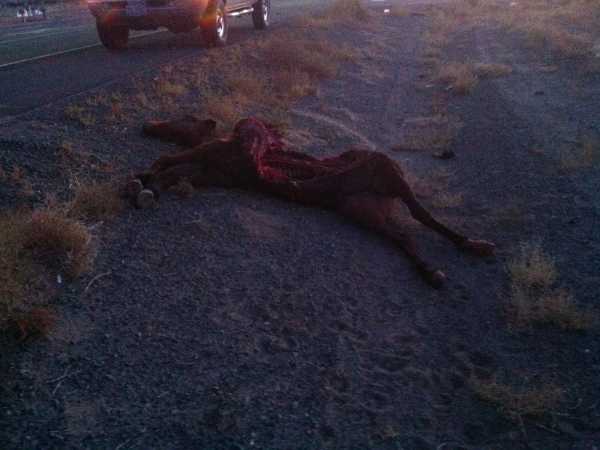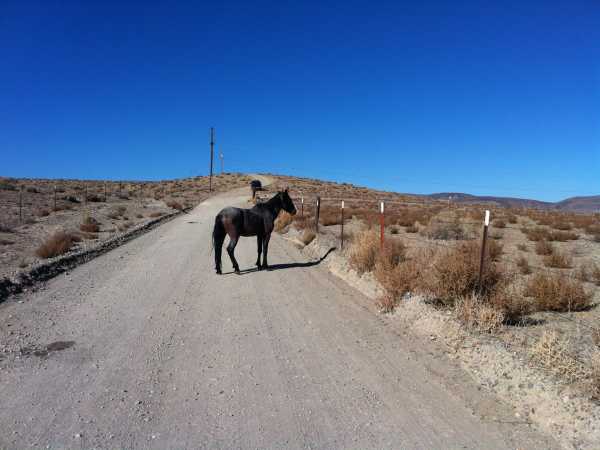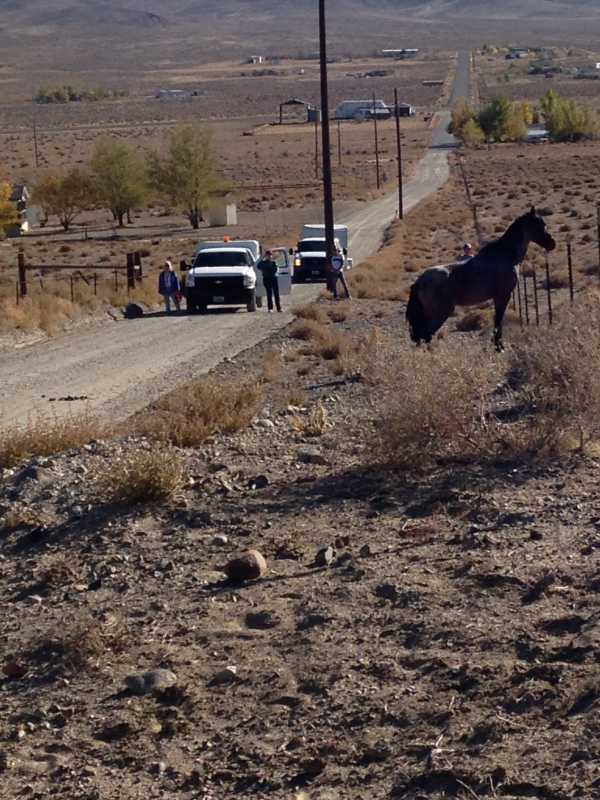LARGE ANIMAL RESCUE SKULL SESSION
|
Horse with a Flat
HOW THE INCIDENT WAS RESOLVED |
|
Background.
Lyon County, Nevada is home to close to 1,000 free-roaming horses that dot the hills and wander through the neighborhoods. Unfortunately they also occasionally wander onto area highways.
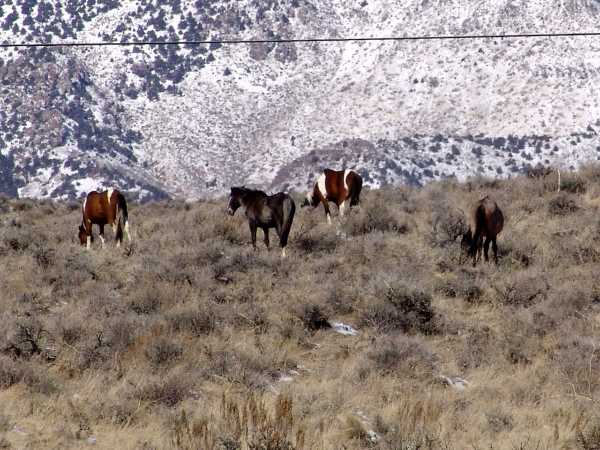 Recently a large pack of coyotes had been causing trouble in town, eating mostly domestic dogs and cats. However they would also chase some of the horses. During the night the coyotes apparently went after a band of three young bachelor studs, running them over US-50 where one was struck and killed by a motor vehicle. The unfortunate horse was dragged from the highway where the coyotes returned to engage in a feast. This is the same horse that last year we removed a wire basket from his head.
|
| ACTUAL RESCUE ACTIVITIES |
A crew in one of the dog trucks responded to the scene to locate the horse. I responded with the stock trailer and called for the panel trailer and an additional two volunteers.
The horse was in a section of road bordered by two barbed wire fences so we blocked the lower section of the road with our vehicles and stretched construction netting across the upper part of the road.
One of the members stayed with the construction netting to raise and shake it if the horse decided to challenge it.
One of the members stayed on the opposite side of the fence that the horse was looking over to discourage any attempts to jump it.
We built a funnel chute with an extra panel placed so we could use it as a gate to contain the horse near the trailer.
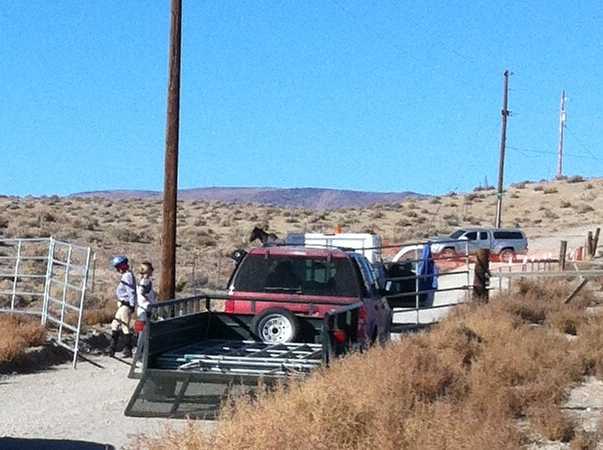
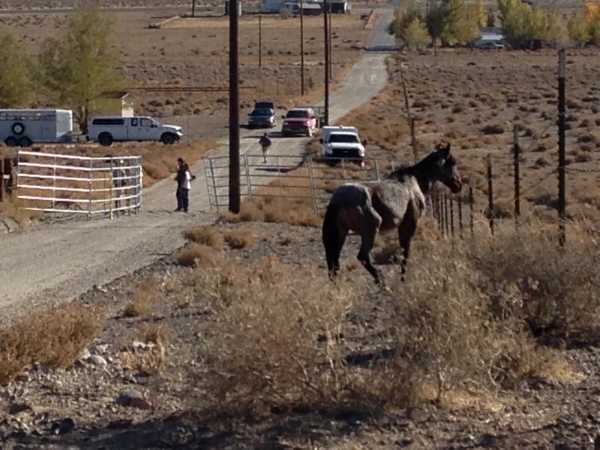
We backed the stock trailer to the funnel chute and slowly worked the horse down to the trailer by walking with the construction netting. The netting was shaped like an uneven "U" with the most forward part of the netting moving alongside the fence that the horse was initially looking over. Our objective was to "scoop" him off the fence line and encourage him to move down the center of the road.
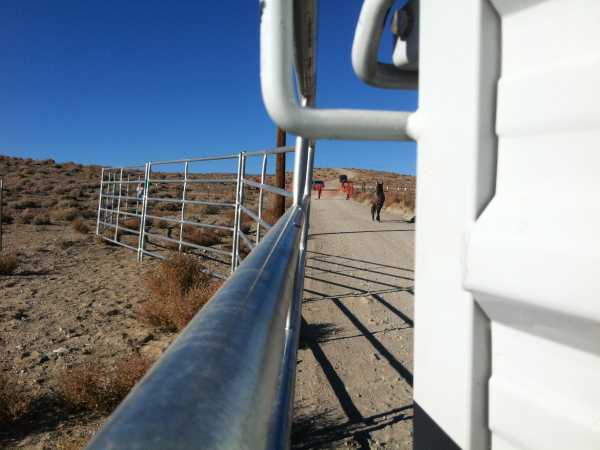
Once the horse was past the cutoff gate, we locked him in.
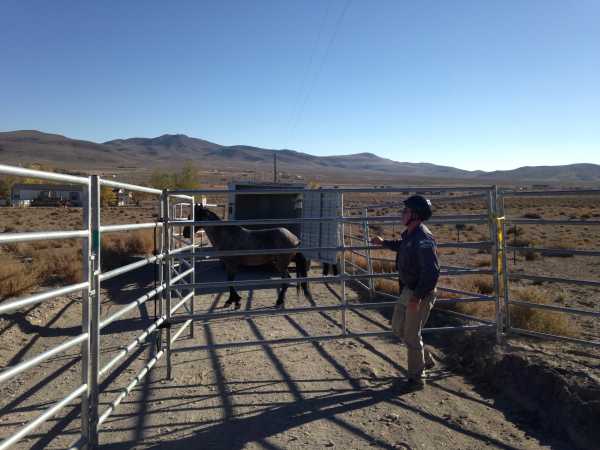
Our next step was to move him into the trailer.
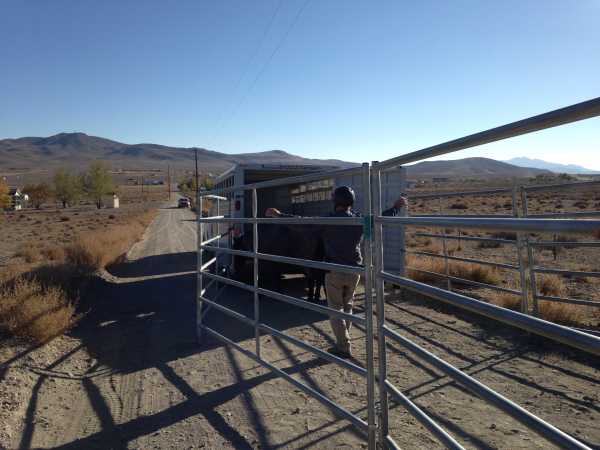
He was a little sticky on this point however with the help of some construction netting and by giving him a few seconds to study the inside of the trailer and decide that it was safe, he went right in.
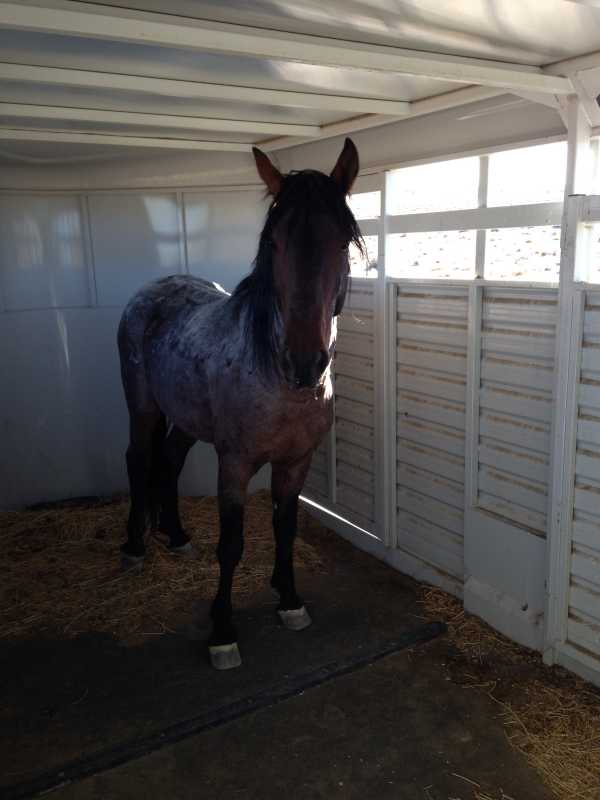
"Charlie," as the rescuers named him, is presently recovering in the state corrals at the Stewart Conservation Camp in Carson City. He will likely be gelded and join a sanctuary herd.
Go to Skull Session Index
Return to the Strike Team LRTC Page
This material is intended for the use of the Technical Large Animal Emergency Rescue (TLAER) Facebook Group. TLAER is a trademark of Technical Large Animal Emergency Rescue. |
